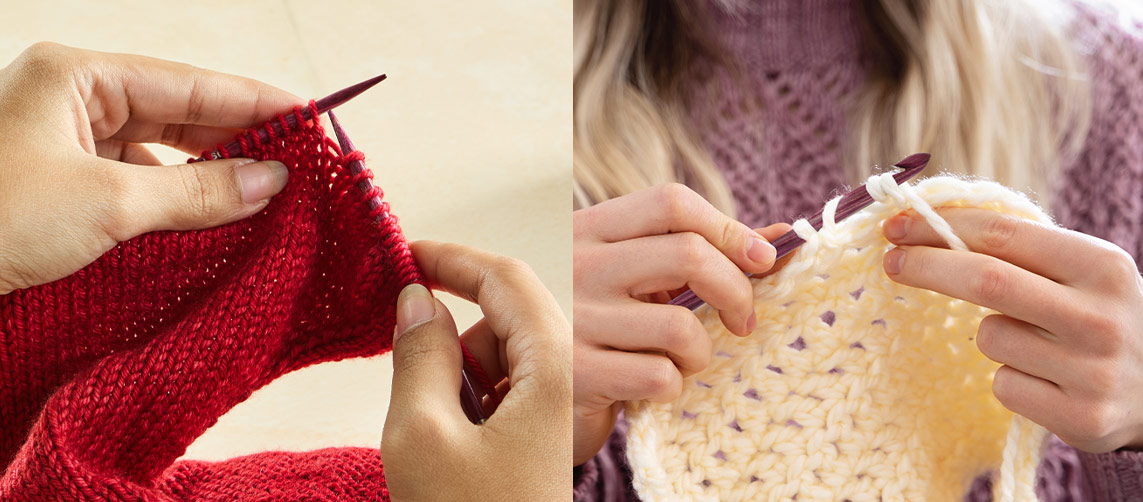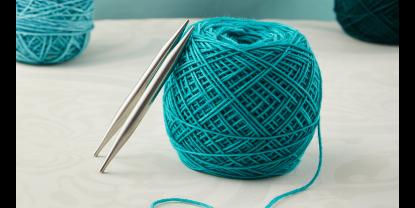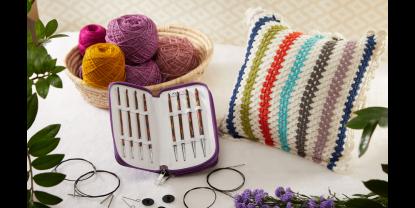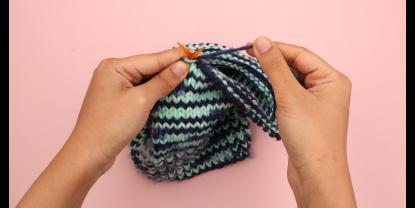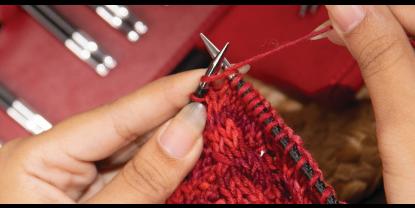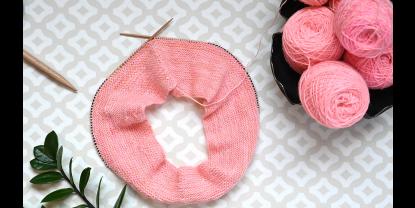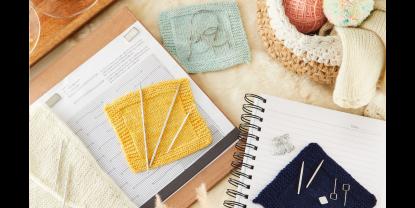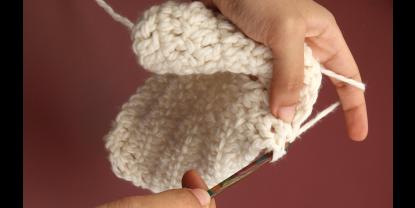Making your own knitted or crocheted fashion is already a sustainable and eco-friendly activity. Understanding this intrinsic connection, many crafters naturally seek yarns that resonate with their principles. The good news is the yarn industry is keeping pace with your values. Advancements in recycling technology have led to an innovative and diverse range of sustainable, recycled yarns. Made from base materials such as leftover textiles and repurposed plastics, these yarns hold the power to revolutionize the fibre arts.
Let's look into the world of these environmentally conscious yarn choices and discover how they are produced and how they harmonize with your knitting needles and crochet hooks.
Can you recycle your own garments into yarn?
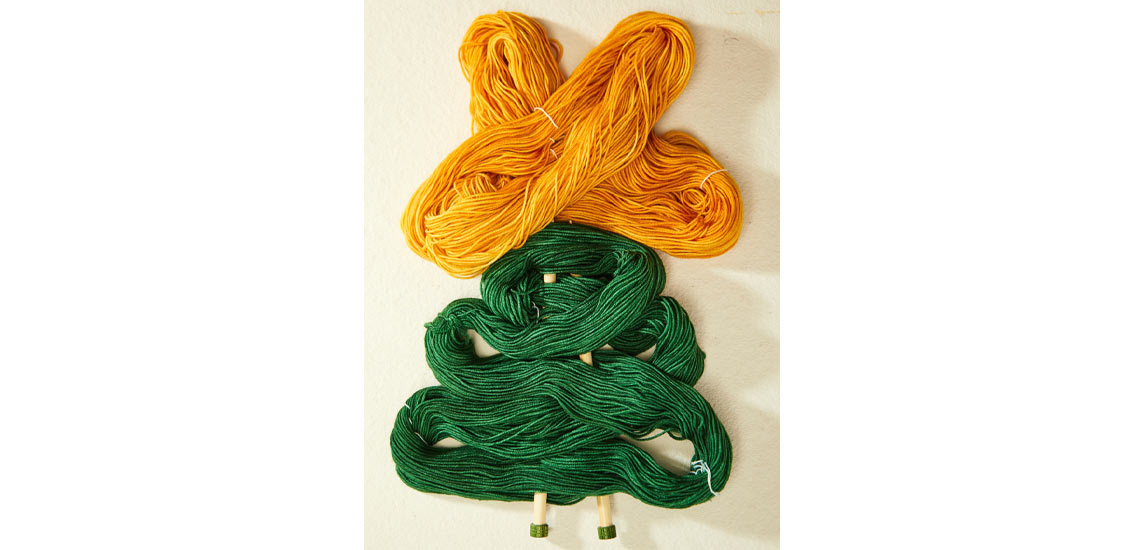
Recycling yarn from your knitted or crocheted garments is possible and can be a great way to give life to a new knitting or crochet project. However, some yarns are more accessible to recycle than others. Wool and other natural fibers are typically easier to unravel and reuse than synthetic fibers, which might stretch or degrade.
Tips to recycle yarn from your garments:
- Check the condition of the yarn. It might not be suitable for reuse in a new project if it's heavily worn, pilled, or felted.
- Pay attention to how the garment is constructed. If it's seamed, you'll need to carefully remove the seams to preserve the length of the yarn. Seamless or top-down constructions are generally more effortless to unravel.
- Be gentle when unraveling to avoid breaking the yarn. Start from the opposite end of the final bind-off.
- Once unraveled, the yarn may have kinks. You can skein it, wash it gently, and hang it to dry with a weight to straighten it out.
- After cleaning and drying, rewind the yarn into a ball or skein, not stretching or damaging it. Use a professional ball-winder for best results.
How are industrially recycled yarns obtained?
The recycled knitting and crocheting yarns you can find in shops today are created through a meticulous process. Starting with collecting textile waste from factory remnants or used garments, these materials are sorted by fiber type and color, reducing the need for re-dyeing and thus conserving energy and minimizing pollution.
The sorted textiles are cleaned to remove impurities and then broken down; natural fibers are mechanically shredded while synthetic ones might undergo chemical processes.
After the fibers are carded to mix and align them, they are spun into yarn. Some recycled fibers are blended with new fibers to enhance qualities like strength or color consistency. To reduce environmental impact, dyeing is optional and often omitted in eco-friendly yarn production.
In the market today, you can find yarns made from recycled cotton, wool, and polyester, often seen in recycled denim yarns, eco-friendly wool blends, or yarn made from recycled plastic.
What are the benefits of buying recycled knitting yarn?
- Reduced need for new fiber production, crucial for water, pesticide, and land-intensive materials like cotton.
- Lower energy consumption compared to manufacturing new fibers, particularly synthetic ones.
- Water davings, especially significant if re-dyeing is skipped.
- Less chemical usage in recycling, especially when bypassing the dyeing phase, thus decreasing ecological harm.
- Minimizing landfill waste and reducing associated greenhouse gas emissions.
- Decreased emissions through the reduced need for raw material extraction and fiber processing.
- Reduced impact on biodiverse ecosystems, especially in areas like conventional cotton farming.
How does recycled material knit and crochet up?
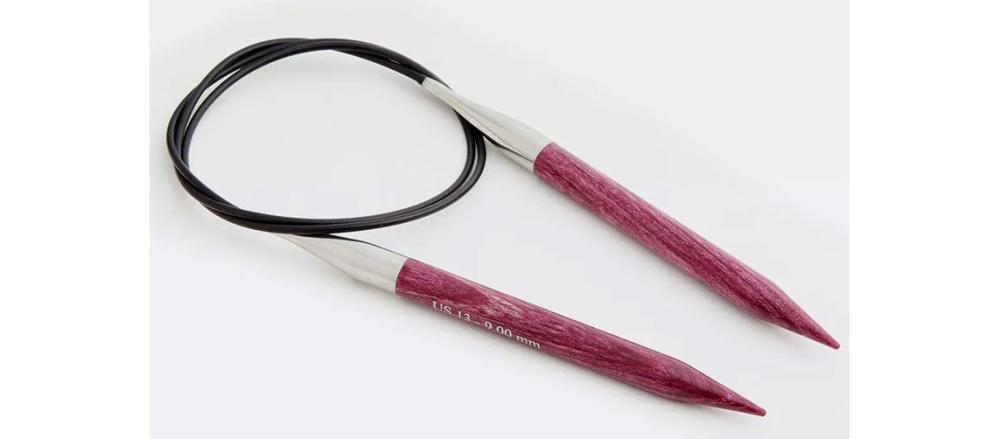
When using recycled wool, cotton, or mixed fibre yarn on your knitting needles and crochet hooks you will quickly notice they have different characteristics compared to new wool, cotton, or acrylic options.
Texture and Feel
Recycled yarn can sometimes be less soft and smooth than new fibers, especially if made from post-consumer waste, which may have been worn and washed multiple times. However, high-quality recycled fibers can be pretty close in texture to virgin fibre.
Less slippery on knitting needles and crochet hooks
When working with recycled yarn, many crafters notice a pleasant difference in its interaction with their knitting needles or crochet hooks. Unlike new yarn, especially those with a high synthetic content, recycled yarn tends to be less slippery. The slightly more textured feel of recycled yarn provides a better grip on needles and hooks, making it easier to manage, especially for intricate patterns or for beginners who are still mastering their technique.
Evenness and Consistency
New yarns, being made from virgin fibers, typically have a high degree of uniformity in thickness and texture. Recycled yarns might show more variability, especially if they come from a mix of different source materials. This may result in visible unevenness in some knitting and crocheting patterns, such as plain stockinette stitch or cabling while other patterns like Garter or highly textured stitches may work just fine.
Color and Dyeing
Recycled yarns, particularly those that haven't been re-dyed, may have a more muted or heathered color palette due to the blending of different colored fibers. This can be an aesthetic preference for some projects.
Elasticity
Wool is known for its elasticity, but recycled wool might not be as springy, depending on the length and quality of the fibers. Similarly, recycled cotton and acrylic might not retain the same level of stretch or bounce back as their new counterparts. Moisture absorption and Breathability can also change in recycled fibers. Recycled cotton might not be as absorbent as new cotton, depending on the processing it has undergone.
While there might be some trade-offs in their physical properties, using recycled yarns has an overall positive environmental impact, which can add an intangible value to your knitting and crocheting projects. KnitPro is committed to recycling and reusing materials and resources in all areas of its production. Our packaging, knitting needles, and accessories, such as those from the Mindful Collection, are made from recycled or sustainably sourced materials.




